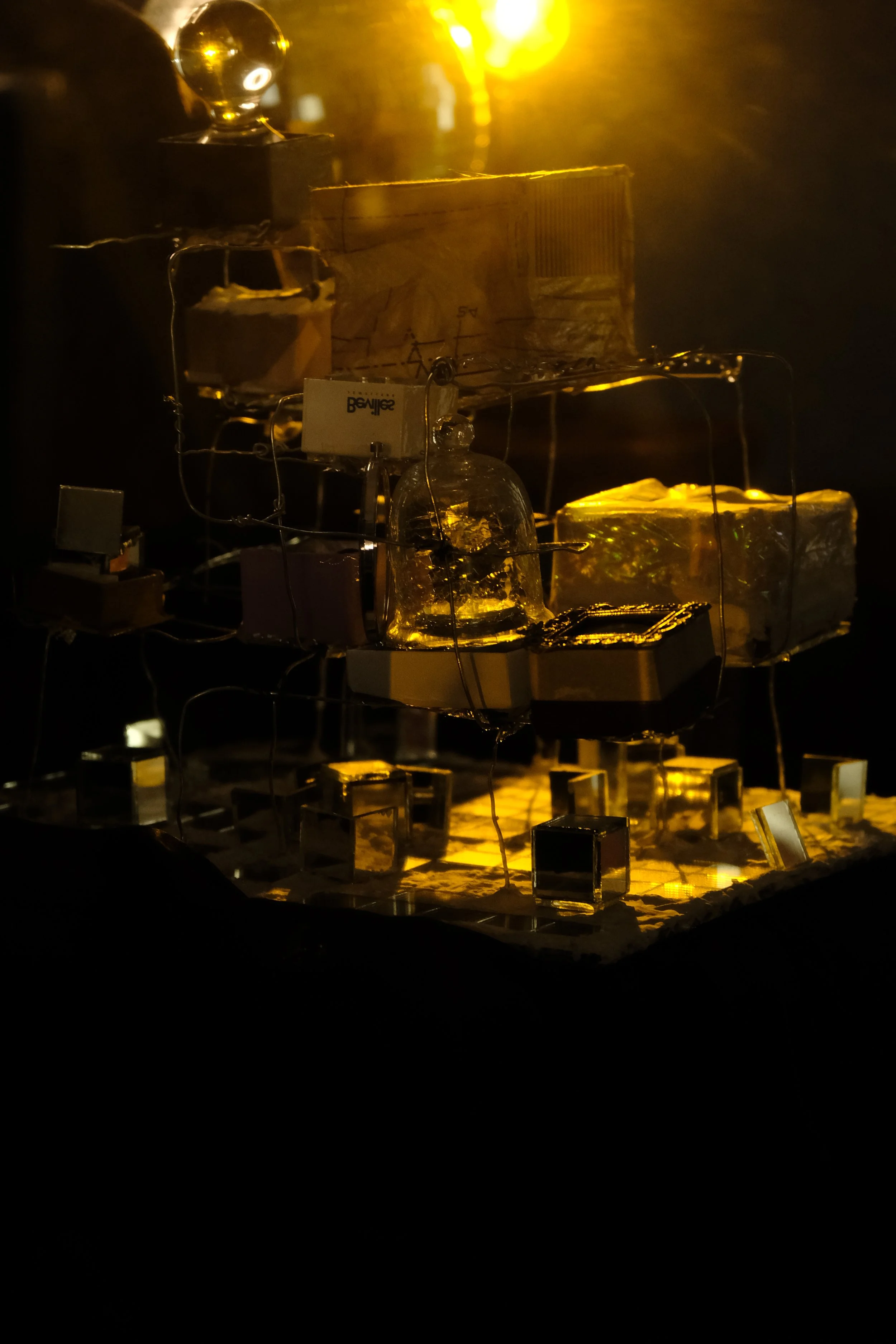
Reconfiguring, Navigating
EXPLORING CREATIVE MAPPING TO NAVIGATE DIFFICULT LIFE EXPERIENCES:
AN AUTOETHNOGRAPHIC CREATIVE RESEARCH PROJECT
The motivating research question behind this creative project is: How can creative mapping be used to navigate difficult life experiences?
Maps guide us into the unknown, helping us navigate through unfamiliar territories. Contemporary art approaches to maps highlight their affordances as a tool for processing, and artists have used mapping to navigate personal and social life.
Undertaken during the final year of my Master’s in Creative and Cultural Futures, my creative research project develops the concept of mapping as a process of "wayfinding" through difficult life experiences. It builds on contemporary art practices that employ mapping to explore identity, navigate complex concepts, examine connections, and dissect relationships. This creative research project aims to develop a creative mapping process of wayfinding through the world, harnessing the material affordances and aesthetic elements of found objects, reflective materials, and malleable forms.
The Process
The process was an experimental and iterative technique that included adopting a self-reflective autoethnographic approach to recording emerging ideas and themes throughout the creative research journey. A short exegesis on this topic accompanies the creative body of work and provides a foundation for an experimental creative mapping process that can potentially benefit survivors. It is an interdisciplinary creative research project that explores parallels between existing theoretical approaches from neuroscience, psychology, and creative arts for coping with adversity by presenting a creative body of work that enhances our understanding of survivor neuro-resilience. This project encourages future research in expressive arts-based therapeutic contexts that may scientifically evaluate the effectiveness of creative mapping.
Findings
Recording reflections throughout my mapping journey encouraged me to verbalise some emotional insights. It also provided a sense of groundedness. Self-reflective journaling contributed to the mapping process by fueling creative experimentation, and I returned to making with more intention. This autoethnographic approach allowed me to identify the following emerging themes:
‘Mapping’ as agentic wayfinding allowed me to access my sense of agency or control in during the process, from selecting the found objects to bending and reconfiguring materials.
Coping with uncertainty through creative experimentation provided a safe space to explore possibilities, making me comfortable with uncertainty during the mapping process.
Gaining mastery through reiterative 'reconfiguring' indicates how the tactile experience of working with wires improved my handling of the materials and ability to transform shape and form to the desired effect. Gaining mastery over this process improved my confidence in the approach and technique.
Inspiration based on materiality refers to exploring the materiality of the wires and found objects initiated by the mapping process. Tapping into this sense of touch to access embodied and intuitive knowledge during the 'making' stage was rewarding.
Analysing my journal of self-reflections the change from my initial notion of mapping, going from a structured to a more fluid and creative experimental approach, guided by exploring the materiality of the found objects and materials. I also found the emergence of thoughts and memories, triggered by the sensory experience, the structure and aesthetic qualities of the artwork, inviting me to engage in meaning-making. I felt instrumental in bringing about the physical and metaphorical transformation of the found objects and materials. Delving into the feelings elicited by the final work provided insight into my shift in perspective, allowing me to appreciate my agency in salvaging the discarded past to create something new and meaningful.
<reflections>
Through this arts-based autoethnographic approach, I learned that entering a creative dialogue with materials through ‘making’ can translate my implicit inner world with clarity and agency. The experiential ‘making’ underlying the self-reflective autoethnography was critical to this healing journey. My experience supports the argument for unarticulated experience and embodied learning being the part where the most significant leverage for therapeutic change is found. I find that mapping can encourage experimentation with metaphorical and material resources and agentic self-reflection during the ‘making’ process, supporting therapeutic outcomes in the aftermath of trauma.
Artist Statement
from the ‘We Need To Talk’ exhibition by the Faculty of Arts & Design at the Belconnen Arts Centre, Canberra
‘Trauma is not simply an effect of destruction but also, fundamentally, an enigma of survival’ Cathy Caruth (1996)
For many generations, experiences of trauma were socially unspeakable, as survivors feared being categorised as fundamentally broken individuals. The limitations of traditional forms of talk therapy, in some cases, have exacerbated feelings of defeat and deficiency. So how might we talk with materials, objects, and techniques from other disciplines to infuse hope into the conversation around trauma?
Recent findings on neuroplasticity and our role in changing the physiology of the brain through knowledge and experiences bring new hope to conversations about trauma. This neuroscientific turn has a distinctly spatial quality, using complex imaging to examine paths among neural networks, which change how we view the world and our place in it. Reconfiguring, Navigating (2023) is an outcome of auto-ethnographic creative research that develops methods for survivors to chart a way forward in the aftermath of trauma, through forms and processes of creative mapping. This work presents a mixed-media installation of creative mapping artifacts that document the complex emotions that I encounter while processing trauma, inspired by the very neural networks that were seemingly unchangeable a few years ago.




